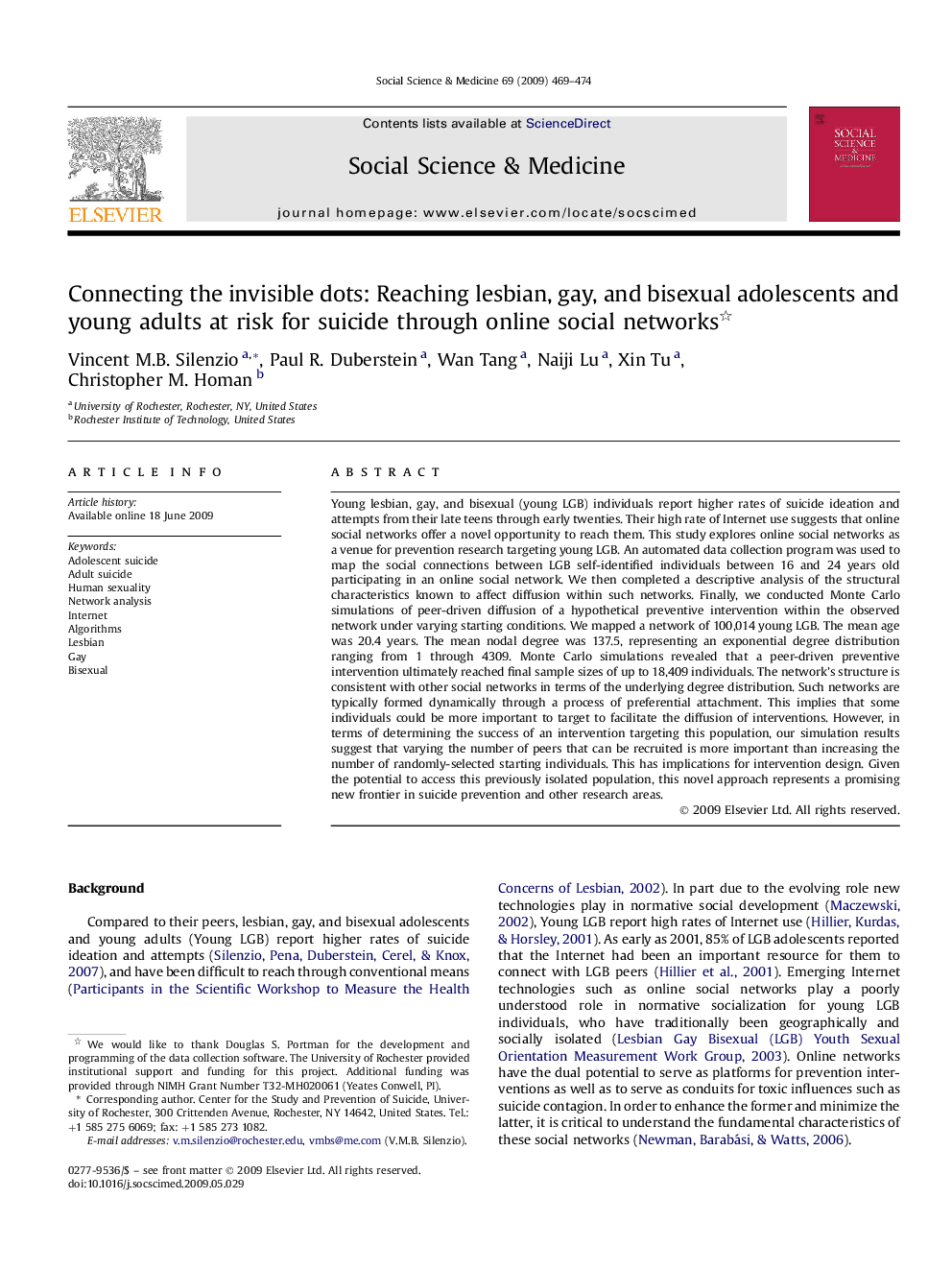| Article ID | Journal | Published Year | Pages | File Type |
|---|---|---|---|---|
| 953349 | Social Science & Medicine | 2009 | 6 Pages |
Young lesbian, gay, and bisexual (young LGB) individuals report higher rates of suicide ideation and attempts from their late teens through early twenties. Their high rate of Internet use suggests that online social networks offer a novel opportunity to reach them. This study explores online social networks as a venue for prevention research targeting young LGB. An automated data collection program was used to map the social connections between LGB self-identified individuals between 16 and 24 years old participating in an online social network. We then completed a descriptive analysis of the structural characteristics known to affect diffusion within such networks. Finally, we conducted Monte Carlo simulations of peer-driven diffusion of a hypothetical preventive intervention within the observed network under varying starting conditions. We mapped a network of 100,014 young LGB. The mean age was 20.4 years. The mean nodal degree was 137.5, representing an exponential degree distribution ranging from 1 through 4309. Monte Carlo simulations revealed that a peer-driven preventive intervention ultimately reached final sample sizes of up to 18,409 individuals. The network's structure is consistent with other social networks in terms of the underlying degree distribution. Such networks are typically formed dynamically through a process of preferential attachment. This implies that some individuals could be more important to target to facilitate the diffusion of interventions. However, in terms of determining the success of an intervention targeting this population, our simulation results suggest that varying the number of peers that can be recruited is more important than increasing the number of randomly-selected starting individuals. This has implications for intervention design. Given the potential to access this previously isolated population, this novel approach represents a promising new frontier in suicide prevention and other research areas.
